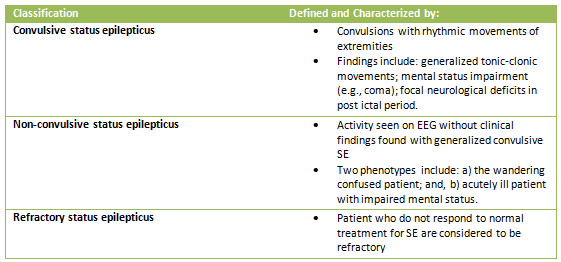Module 3: Assessment
Lesson 6
Learning outcome
Describe the epidemiology, comprehensive assessment, safety considerations and goals of care that need to be addressed in prescribing therapy for status epilepticus.
Introduction
Status epilepticus, a prolonged seizure crisis and relatively common neurological emergency, is discussed in relation to the prescription of controlled drugs and substances.
Definition of status epilepticus
Status epilepticus (SE) is defined as more than 30 minutes of prolonged seizure crisis involving either:
- continuous seizure activity
or - two or more seizures in sequence without regaining full consciousness between seizures
Most seizures last 1–2 minutes. Given the high mortality rate associated with late intervention, treatment protocols recommend intervention after 5 minutes of continuous seizure activity. Status epilepticus can be classified by electrical activity (semiology), underlying etiology and the duration of the seizure.
There are three main etiological sources of SE:
- Exacerbation of a pre-existing seizure disorder
- First occurrence of a seizure disorder
- Other insults outside of a seizure disorder
The characteristics of the three Status Epilepticus states are outlined below:

References:
- Brophy, G. M., Bell, R., Claassen, J., Alldredge, B., Bleck, T. P., Glauser, T., … Vespa, P. M. (2012). Guidelines for the evaluation and management of status epilepticus. Neurocritical Care, 17(1), 3–23. doi:10.1007/s12028-012-9695-z
- Glauser, T., Shinnar, S., Gloss, D., Alldredge, B., Arya, R., Bainbridge, J., … Treiman, D. M. (2016). Evidence-Based Guideline: Treatment of Convulsive Status Epilepticus in Children and Adults: Report of the Guideline Committee of the American Epilepsy Society. Epilespy Currents, 16(1), 48–61. doi:10.5698/1535-7597-16.1.48
- Roth, J. L., & Blum, A. S. (2016). Status Epilepticus. Retrieved from http://emedicine.medscape.com/article/1164462-overview
